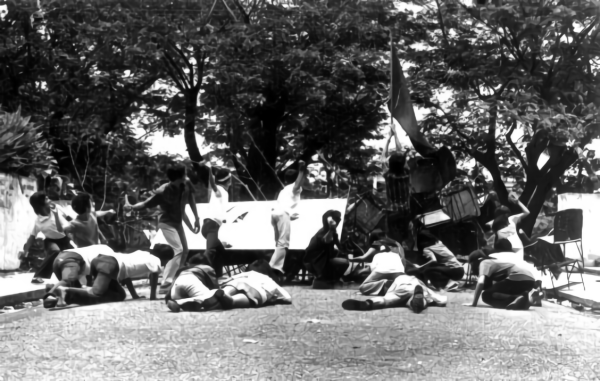A UP Professor's View and Account of the Diliman Commune.

While the barricades straddled the streets in the UP campus, they carried different meanings to two different sectors.
To the so-called conservative and moderate citizens, in the faculty and among non-academic personnel and campus residents, the barricades represented nothing else but anarchy, breakdown of orthodox law and order, defiance of duly constituted authority — even the start of the feared revolution. However, to the students who set them up and defended them for eight days and nights — the youths impatient for change in our society, who despair of deliverance from the burgeoning evils of our political, economic and cultural systems — the barricades symbolized two things: more immediately, resistance against the entry of troops into the campus; and in a larger sense, active protest against the Establishment which is accused of perpetuating and even refining the evils of Philippine society.
The UP barricades may be likened to the Cry of Pugadlawin in August, 1896. To the Spanish authorities and the propertied gentry among the Filipinos, the Cry was unlawful, a defiance of authority, a breakdown of law and order. But to the Katipuneros, and the generations that came after them, the Cry was patriotism of the highest order.
The UP barricades remain to this day, in the minds of the timid and the fearful, an awesome thing. If conditions in the Philippines do not improve immediately, the barricades will remain an awesome thing for a lot of people for sometime. But if the barricades would contribute even a bit to the improvement of our society — as this writer hopes they would — then the Filipinos of the future would be beholden to those youths who risked lives to set them up and to defend them. History, a better judge than any one of us, will vindicate the barricades and the barricaders.






Comments